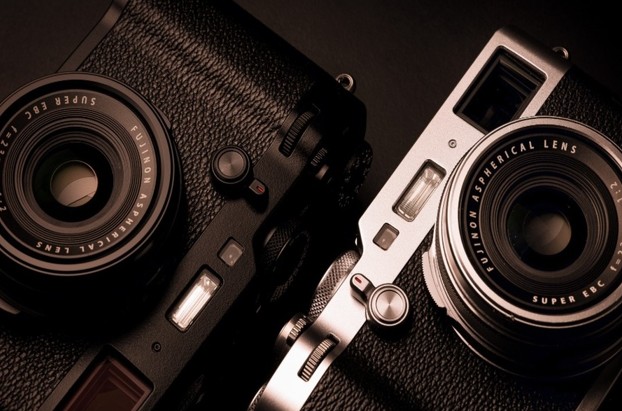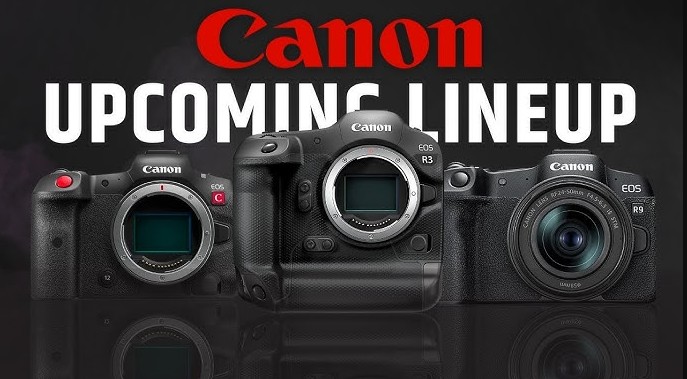Best Selling Products
Top 4 "Lens Legends" That Shook the World of Photography
Nội dung
Explore four iconic cameras that not only revolutionized the imaging industry, but also helped shape the face of modern photography as we know it today.

Top 4
Over the course of more than a century of development, the photography industry has witnessed many revolutionary milestones, and sometimes, just one camera is enough to completely change the way we capture, share and perceive images. There are cameras that are not just devices, they are symbols of change, the origin of a new wave of technology, and the inspiration for many generations of professional photographers and ordinary users. In this article, SaDesign will explore with you 4 iconic cameras, devices that have not only created a turning point in the imaging industry but also contributed to shaping the face of modern photography as we see it today.
1. Kodak Digital Camera (1975): The first camera that changed the history of photography
Steven Sasson invented the world's first digital camera at Kodak. Although this first camera was ugly, inconvenient to use and took 23 seconds to take a black and white photo of only 0.01 megapixel, it was the most important invention. The birth of this camera officially ended the film era and opened the digital camera industry as it is today.
.jpg)
Revolutionary changes of this camera:
Filmless Photography: This was the first camera that allowed users to take photos without film or development, paving the way for the end of analog photography.
Digital storage: With new cameras, the images captured are no longer physical objects but become digital data.
Instant View: No more waiting for film to develop to see what you've taken, with the new camera you can instantly view your photos on your computer screen.
Unlimited Shooting: No film costs, users can take as many photos as they want.
The birth of this camera began when a young engineer at Kodak was assigned to find applications for the newly invented CCD sensor. During the research, he created the digital camera as we know it. However, at that time, his invention was not appreciated, his colleagues sarcastically called his camera "filmless photography". The directors ignored it, looked at it and just said: "Interesting, but forget it, go back to your main work".
.jpg)
But undeterred, Steven Sasson saw what his superiors did not: that the invention was about more than just the quality of the images; it was about the nature of photography itself. The camera ushered in a time when photographs did not need a physical medium to survive. They could be reproduced indefinitely without degradation, transmitted instantly, and edited in ways that the darkroom could not. Although the initial images were not great, the results were enormous.
Ironically, Kodak invented digital photography, then ignored it for fear of hurting film sales. This caution killed the company that created the digital future. They invented the technology that would destroy them, and then spent the next 30 years pretending nothing happened. It’s considered one of the greatest strategic mistakes in business history.
To this day, every camera you use—phone, mirrorless, compact—has its roots in that clunky, obscure prototype. When you post an Instagram story, edit a RAW file, or back up your photos to the cloud, you’re using principles that Steven Sasson first discovered nearly 50 years ago. And that historic invention was discovered in an underground lab that no one noticed.
2. Canon EOS 5D Mark II (2008): The beginning of the era of DSLR filming
This is more than just a camera with built-in video capabilities. The Canon 5D Mark II has inadvertently become the most important filmmaking tool of the 21st century.
.jpg)
Cinematic quality video at a low cost: For the first time, mainstream users can shoot full-frame video with cinematic image quality at a consumer-grade price.
Hollywood got on board: The Canon 5D Mark II was used in major productions like Black Swan, Captain America, and the House series, proving that DSLRs could make their way into professional studios.
The Age of YouTube Content Creation is Booming: The Canon EOS 5D Mark II Opens the Door for Individuals to Produce Broadcast-Quality Video Without a Studio or a Huge Budget.
The End of the Traditional Camcorder: Traditional camcorders virtually disappeared overnight, as users flocked to DSLR cameras for video recording.
What’s surprising is that this video feature wasn’t added by Canon until late in the development process – it was introduced to compete with the Nikon D90. At the time, Canon’s engineers were focused on stills, and they had no idea that they were about to inadvertently revolutionize filmmaking. At first, the camera had modest video specs – 1080p/30fps and no manual controls while recording. Professional videographers initially thought it was just a toy.
.png)
It wasn’t until Vincent Laforet used the D5 Mark II to shoot his short film “Reverie” that the camera’s video capabilities became known and widely appreciated by professional filmmakers. The footage the D5 Mark II captured looked like it could be shot on a $100,000 film camera. Hollywood immediately took notice, and within months, major productions were using the 5D Mark II. They customized the camera to shoot crane scenes, accident scenes, and even entire scenes. The full-frame sensor, with its ability to create bokeh and low-light performance, created a “filmic quality” that traditional cameras couldn’t achieve.
The Canon 5D Mark II proved to be the best video camera for just $2,700, something that previously only cameras costing over $50,000 could do. But the 5D Mark II didn’t stop at Hollywood, it was everywhere, from bedrooms to coffee shops and anywhere else someone wanted to tell a story. It became the most popular video camera of the 21st century, allowing wedding videographers, YouTubers, content creators, and more to create quality videos that were never possible before.
This had an unexpected consequence - the birth of the modern content creation industry. Every YouTuber, TikToker, and indie filmmaker today is influenced by this camera. The Canon 5D Mark II not only personalized filmmaking, but also created a whole new form of visual storytelling. Without it, there would have been no Casey Neistat, no Peter McKinnon, and no influencer economy as we know it today. Canon simply wanted to make a better camera for stills and inadvertently laid the foundation for the global content creation economy.
3. Sony A7 (2013): Opening a new era of mirrorless cameras
While not the first mirrorless camera, the Sony A7 was the first to make DSLRs obsolete. Capable of shooting full-frame images at half the size, the A7 completely blew mirrorless cameras out of the water.
.png)
Revolutionary changes when Sony A7 launched:
Size Revolution: The Sony A7 proves that you can get full-frame image quality without lugging around a big, heavy camera like a traditional DSLR.
Shock to the camera industry: The launch of the full-frame mirrorless line forced Canon and Nikon to review their entire DSLR development roadmap, and although they were slow to react at first, the two companies eventually had to join the game.
Electronic viewfinders are good enough: Initially overlooked, EVFs (electronic viewfinders) on cameras like the Sony A7 have improved over time and are finally good enough to completely replace optical viewfinders (OVFs).
Lens versatility: With the versatile E-mount and rich adapter ecosystem, Sony a7 users can mount almost any lens ever produced, from classic to modern lenses.
.png)
Sony wasn’t even considered a serious camera company when it launched the Sony A7. Back then, Sony was known only as an electronics company that made sensors for pretty much every other camera company, including Canon and Nikon. Traditional photographers viewed Sony as an outsider, a tech company trying to get into the game of the established giants. Sony’s previous Alpha cameras were serviceable but unspectacular. They were basically Minolta DSLRs with a Sony logo on them. So the big guys didn’t see the A7 coming.
When the entire camera industry was convinced that full-frame sensors had to come with large bodies. A “serious” camera had to have a pentaprism mirror box, mechanical complexity. Going against these inherent notions, Sony developed the A7, which was smaller than most DSLRs with APS-C sensors, but still delivered full-frame image quality. The birth of this camera was like a solution, opening up the future of photography.
Even Canon and Nikon’s initial reaction was to deny that they had been beaten. They argued that “real photographers” would still choose optical viewfinders, that electronic viewfinders were just slow toys and that their small size would not give them the professional feel of holding them. Both companies had decades of experience developing DSLRs, but in the mirrorless race, they were almost starting from scratch.
4. Fujifilm X100 (2011): The return of art photography
As you know, Fujifilm in recent years is a camera brand that has emerged as a phenomenon in the photography world with the motto of focusing on creativity and art instead of chasing technology. This is not the first time the company has pursued this motto, but it started quite a while ago. And the launch of Fujifilm X100 in 2011 was the turning point, marking the "different" path that the company pursued.
.png)
Some of the revolutionary changes of this camera include:
Bringing traditional design into a modern camera: The X100 is designed with the same appearance and operating buttons as film cameras, to bring joy to users when adjusting the camera themselves and taking photos intentionally, without haste, in the spirit of analog.
Integrated Film Simulation: With a film color simulation filter, Fujifilm allows users to easily edit on digital cameras to create interesting and beautiful effects right after taking the photo, bringing endless creative inspiration to the photographer.
Compact design, equivalent to a phone: While other companies are focusing on developing technology in bulky DSLR cameras, Fujifilm has taken the opposite approach. The company designed the X100 to be extremely compact, allowing users to easily put it in their pockets when walking around town, redefining the way photographers take pictures.
Vintage style appearance: Fujifilm realizes that users are not only interested in the parameters but also pay special attention to the appearance of the camera. Therefore, the company has focused on developing the design, creating a Fujifilm X100 camera with a stylish Vintage design. This is not only a tool for taking photos, but it is also considered an expensive fashion accessory.
In 2011, the camera industry was in a race for specs. More megapixels, faster autofocus, higher ISO, more focus points - each new camera had to outperform the previous version by an impressive margin. Meanwhile, Fujifilm - a company known for instant cameras and analog film - took a completely different approach. They released a fixed-lens camera that looked like it came from the 1960s, not 2011. This caused a stir in photography forums around the world, with many wondering who would buy a single-focal-length camera with a classic design when they could buy a camera with newer technology.
The X100 is Fujifilm’s love letter to photography as a craft, not just a technology. The camera features a hybrid viewfinder that feels like a rangefinder, but can be easily switched to an electronic viewfinder for more precision. Physical dials for aperture, shutter speed, and exposure compensation make each action intentional and emotional. Most importantly, Film Simulations transform digital files into works of art that have the color and feel of real analog film, allowing for “beautiful” photos without the need for post-production.
.png)
What makes the X100 revolutionary in the history of photography, however, is not its technology, but the way it brings photography back to the personal and intentional. In a world where smartphones have made photography so easy and DSLRs so complex, the X100 forces users to think carefully about parameters, composition, and creativity within the confines of a single focal length. This inconvenience becomes a powerful catalyst for creativity, forcing users to think more carefully every time they press the shutter.
Upon its launch, the camera quickly became a cultural phenomenon with a deeply passionate community of users who bought it not out of necessity but for the sheer joy of using it. The success of the X100 changed the industry: camera manufacturers began to emphasize “shooting experience” and “creative inspiration”. Retro designs that were once considered outdated became mainstream. The X100 proved that in a world full of choices, it is the limitations that can inspire the truest creativity.
What these cameras have in common is that none of them are perfect: the Kodak is crude, the 5D Mark II is limited when shooting, the Sony a7 has a weak battery, the X100 is slow and erratic. But what they all do most importantly is that they have successfully broken the limits that were previously considered obvious. In the future, perhaps the photography industry will witness many more "new revolutions" with more surprises. Maybe cameras will apply more AI, integrate AR technology and many other things that many people may not be able to imagine. Let's wait and see which cameras will break the stereotypes about photography next!












































